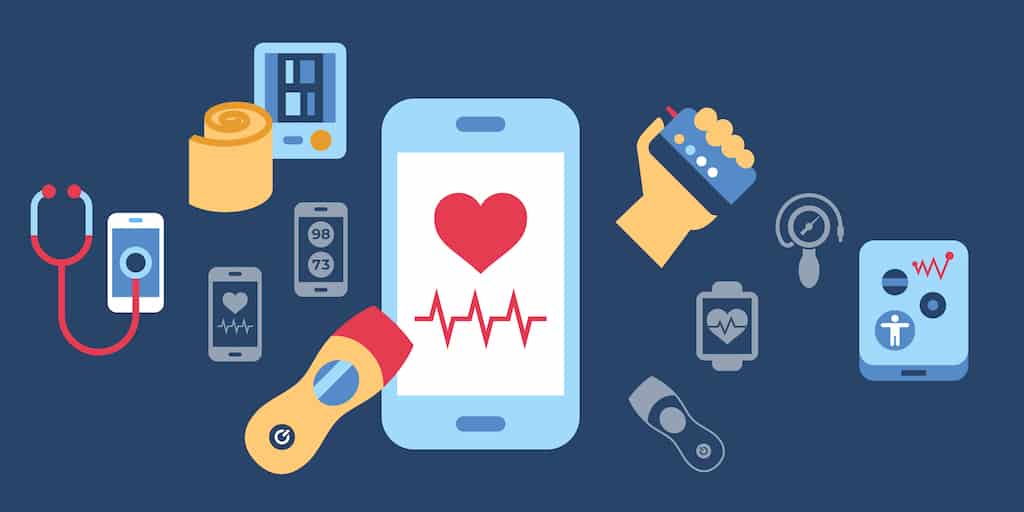The healthcare industry is entering a new digital era, and 2025 is all about intelligent, connected, and patient-centric healthcare apps. From AI-driven diagnostics to wearable integrations, healthcare apps are no longer a luxury — they’re essential to delivering accessible, efficient, and personalized care.
However, as thousands of health and wellness apps flood the market, the challenge for businesses is clear: how to build a healthcare app that truly stands out.
Building a standout healthcare app in 2025 requires more than sleek design and functionality. It’s about solving real-world healthcare challenges through innovation, compliance, and user trust.
Understanding the Healthcare App Market in 2025
Before diving into development, it’s crucial to understand the changing dynamics of the healthcare market. The global healthcare app market is projected to exceed $85 billion by 2025, driven by the rapid adoption of digital health solutions in the USA, Europe, and Asia.
Key growth factors include:
- Rising demand for telemedicine and virtual care
- AI-driven patient diagnostics and treatment recommendations
- Increased focus on preventive and remote healthcare
- Integration of IoT and wearable devices
- Government incentives for digital healthcare transformation
In short, innovation + compliance + patient experience = success in 2025’s healthcare app landscape.
Step-by-Step Guide to Building a Healthcare App That Stands Out
Step 1: Define the Purpose and Target Audience
Start by identifying the specific healthcare problem your app aims to solve. Whether it’s teleconsultation, fitness tracking, chronic disease management, or mental health support — clarity is key.
Ask yourself:
- Who are the primary users (patients, doctors, hospitals, or caregivers)?
- What pain points will the app address?
- What value will it deliver that existing apps don’t?
A focused purpose helps you build a niche solution that stands out in an oversaturated market.
Step 2: Prioritize HIPAA Compliance and Data Security
In healthcare, data security isn’t optional — it’s mandatory. Compliance with regulations like HIPAA (Health Insurance Portability and Accountability Act) in the USA ensures that all patient data is stored, processed, and shared securely.
Key compliance measures include:
- Data encryption (in transit and at rest)
- Two-factor authentication
- Role-based access control
- Regular vulnerability testing
- Secure cloud infrastructure
Building trust starts with protecting patient information — an essential factor in standing out.
Step 3: Design for Accessibility and User Experience (UX/UI)
Healthcare apps must be simple, intuitive, and inclusive. Many users include elderly or non-tech-savvy patients, so your app’s design should prioritize clarity, large visuals, and easy navigation.
Best practices for standout UX/UI:
- Minimalistic and clean interface
- Readable fonts and accessible color schemes
- Voice command integration for accessibility
- Chatbot support for 24/7 assistance
Apps that are beautifully designed and user-friendly are far more likely to succeed and retain users.
Step 4: Integrate Advanced Technologies
To make your healthcare app future-proof in 2025, leverage cutting-edge technologies that deliver intelligence and personalization:
- Artificial Intelligence (AI): Predictive diagnostics, symptom checkers, and automated report analysis.
- Machine Learning (ML): Personalized treatment recommendations and behavior analysis.
- Internet of Things (IoT): Remote monitoring via connected medical devices and wearables.
- Blockchain: Enhanced data integrity and transparent medical record sharing.
- AR/VR: Immersive therapy and training experiences for healthcare professionals.
These technologies not only make your app smarter but also add a competitive edge that sets it apart from traditional apps.
Step 5: Focus on Interoperability
Healthcare data comes from multiple sources — EMRs, lab systems, wearables, and telehealth platforms. A standout healthcare app should seamlessly integrate and communicate with other systems.
Use APIs and standards like HL7 or FHIR to ensure smooth data exchange between systems.
This enhances collaboration, improves decision-making, and creates a connected care ecosystem.
Step 6: Add Personalization and Predictive Analytics
Personalization is the heart of healthcare innovation in 2025. Apps that adapt to user data and behavior can deliver superior experiences.
For example:
- Personalized exercise or nutrition plans
- Medication reminders tailored to patient schedules
- Predictive alerts for chronic conditions using AI insights
By delivering personalized care, your app becomes more than a tool — it becomes a companion in a patient’s wellness journey.
Step 7: Develop a Scalable and Secure Backend
Scalability is vital as healthcare data grows exponentially. Choose a robust backend that supports:
- Cloud-based architecture (AWS, Azure, or Google Cloud)
- Load balancing and data redundancy
- Real-time updates and analytics
A strong backend ensures that your app performs flawlessly, even under heavy usage, while maintaining speed, security, and reliability.
Step 8: Test Thoroughly Before Launch
In healthcare, a single error can have serious consequences. Rigorous testing is non-negotiable.
Test across multiple layers:
- Functional testing (core features)
- Security testing (data encryption & access control)
- Performance testing (speed & load handling)
- Usability testing (ease of navigation)
Only a thoroughly tested app can ensure trust, safety, and reliability in patient care.
Post-Launch: Continuous Improvement and Support
Launching the app is just the beginning. Continuous updates, bug fixes, and performance improvements help your app stay relevant.
Enhance your healthcare app post-launch by:
- Gathering user feedback and analytics
- Updating based on regulatory changes
- Integrating new AI or IoT features
- Ensuring ongoing data protection and compliance
A standout app evolves with technology, trends, and patient needs.
Cost of Building a Healthcare App in 2025
The cost depends on features, complexity, and tech stack, but here’s a general range:
App Type Estimated Cost (USD)
Basic healthcare app $30,000 – $50,000
Mid-level with AI or IoT $60,000 – $120,000
Advanced with integrations $150,000+
Partnering with a specialized healthcare app development company like Code Brew Labs ensures you get a secure, scalable, and innovative solution tailored to your business goals.
Why Partner with the Right Development Company
Choosing the right healthcare app development partner is the difference between a good app and a great one.
A reliable company ensures:
- End-to-end compliance (HIPAA, GDPR)
- Scalable tech infrastructure
- Seamless user experience
- Integration of AI and IoT
- Continuous maintenance and updates
Companies like Code Brew Labs, a leading healthcare app development company in the USA, specialize in delivering intelligent, user-centric, and regulatory-compliant healthcare apps that empower organizations and enhance patient outcomes.
Conclusion
In 2025, the most successful healthcare apps will be secure, personalized, and powered by advanced technologies like AI and IoT. But what truly makes a healthcare app stand out is its ability to connect patients, doctors, and data seamlessly — creating a digital ecosystem of trust and efficiency.
If you’re ready to build a healthcare app that makes a real difference, now is the time to act.
Partner with experts who understand the balance between innovation, compliance, and patient experience — and bring your healthcare vision to life.



